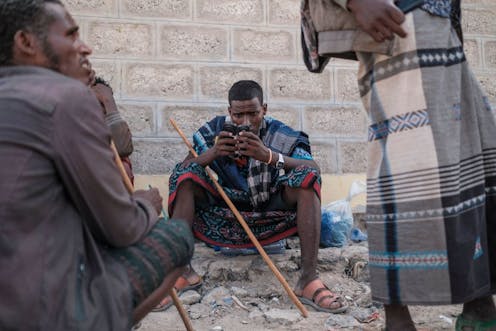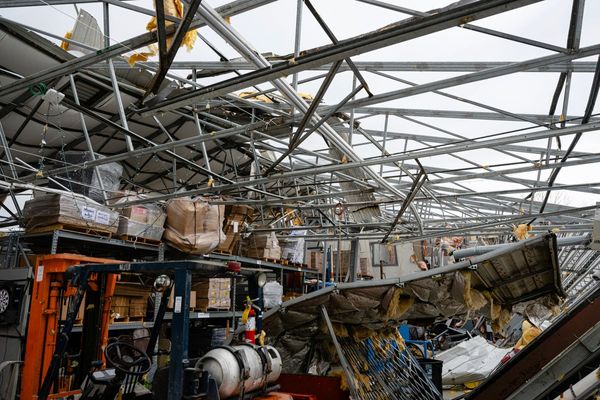
The Russia-Ukraine crisis has captured the world’s attention, and understandably so, but at the risk of eclipsing the visibility of massive humanitarian crises elsewhere. In particular, it has muted attention to Ethiopia’s ongoing civil war, which started in November 2020 and has caused enormous human suffering. Millions have been left without access to adequate food, healthcare and basic services.
Some characterise Ethiopia’s conflict, between the central government and the regional Tigrayan government, as the deadliest war in the world at the present time.
The conflict played out in most parts of Tigray and has also spilled over into parts of the neighbouring Amhara and Afar regions. In October 2021, the World Food Programme stated that up to 7 million people across the three affected regions were in dire need of food assistance. Tigray continues to be under de facto aid blockade.
To date there has not been any micro-level assessment of the welfare impacts of the armed conflict on households in Tigray. To fill this gap we recently conducted a study, using data from phone surveys, to provide the first empirical evidence of the impacts of the conflict on food security, access to food markets and disruptions to livelihood activities.
The major finding from our study, involving 1,982 households (followed for several rounds), was that the armed conflict increased prevalence of food insecurity by 38 percentage points. This is a 106% increase from pre-conflict levels, observed only seven months into the conflict.
Our findings provide new evidence on the near-real-time impacts of an ongoing civil conflict. Our work also highlights the potential of phone surveys to monitor active and large-scale conflicts. This is especially useful in contexts where conventional data sources are not immediately available. Phone surveys have become a common method since the onset of COVID-19, replacing in-person surveys to avoid physical contact.
Phone surveys
Our research used data from phone surveys by the World Bank, which we combined with data from the Armed Conflict Location and Event Data Project’s conflict database. This records conflict events at specific locations and times.
Households were asked about access to food and the extent to which their livelihoods had been disrupted.
Households were interviewed before the war broke out and later during the first phase of the war, between November 2020 and May 2021. Immediately after the outbreak of the war on 4 November, telecommunication and electricity services were suspended or intermittent in areas under the control of the Tigray region government. These services were later restored, which allowed access to some households by phone. But in June 2021, all communications were cut off and interviews were no longer possible.
Comparing data before and after the outbreak of war allowed us to assess the scale and the impact of the war. We also compared data from affected and unaffected households.
Key findings
In addition to establishing that the conflict increased food insecurity by 38 percentage points, there were other important findings.
For each battle event that took place within 20km of a household’s residence, the share of households that reported being worried about getting enough food, being unable to eat healthy foods or eating few food varieties increased by approximately one percentage point.
The impact on the share of households that skipped a meal or ate less food was similar – one more battle event in this intense conflict was associated with about one percentage point increase in these coping strategies.
The war also significantly reduced households’ ability to buy enough staple foods and essential goods, like medicine.
Some of these effects were likely due to supply chain disruptions. But they also reflected the diminished purchasing power of households. The outbreak of the civil war curtailed major livelihood activities, especially non-farm activities.
Unsurprisingly, at that stage, wage-related activities were affected the most while farm activities were relatively resilient to the disruptions.
Similarly, economic activities in urban areas were disproportionately affected in comparison to rural areas.
Read more: How Ethiopia's conflict has affected farming in Tigray
Underestimates
These estimates from the early months of the war are very likely underestimates of the true impacts for the population as a whole. For instance, a larger share of poorer and more remote households (or those unable to receive calls due to disruptions in communications) wouldn’t have been represented in the sample.
The study also wasn’t able to account for what happened after June 2021, when the conflict spilled over to Afar and Amhara.
Nevertheless, our findings confirm intuitive assessments that many of the ultimate impacts of the violent conflict included massive disruptions to markets and supply chains and severely diminished economic livelihoods. Both contribute to food insecurity and suffering.
The overall humanitarian disaster triggered by the war may be much more widespread and will likely leave long-lasting scars, especially if humanitarian assistance continues to be obstructed and limited. Mobilisation of all available resources – both informational and humanitarian – is urgently required to save lives and livelihoods.
Kibrom Abay receives funding from USAID and other donors for conducting research on food security, agriculture, social protection and nutrition.
Guush Berhane receives, via his employer, funding from USAID & others for research on food security and livelihoods as part of the regular activities of the employer.
Jordan Chamberlin, Kibrom Tafere, and Mehari Hiluf Abay do not work for, consult, own shares in or receive funding from any company or organization that would benefit from this article, and have disclosed no relevant affiliations beyond their academic appointment.
This article was originally published on The Conversation. Read the original article.







